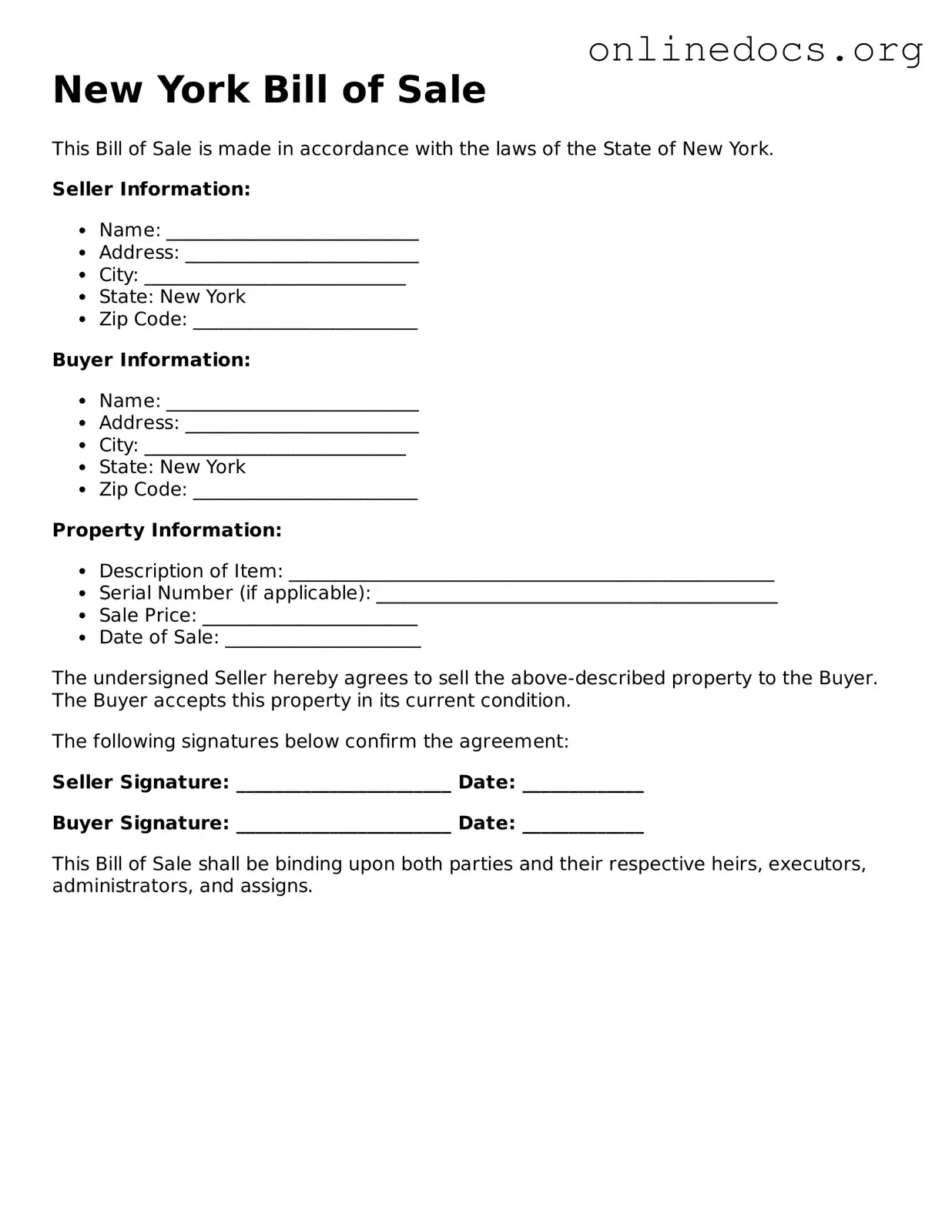A Vehicle Bill of Sale is similar to the New York Bill of Sale form. This document is used specifically for the transfer of ownership of a vehicle. It includes details such as the vehicle's make, model, year, and Vehicle Identification Number (VIN). Both documents serve as proof of the transaction and can be used for registration purposes. Just like the New York Bill of Sale, the Vehicle Bill of Sale protects both the buyer and the seller by documenting the terms of the sale.
A Personal Property Bill of Sale is another document that resembles the New York Bill of Sale. This form is used for the sale of personal items, such as furniture, electronics, or collectibles. It includes information about the item being sold, the purchase price, and the parties involved in the transaction. Both forms provide a written record of the sale, which can help resolve disputes if they arise later on.
An Equipment Bill of Sale is also similar in nature. This document is used when selling or buying equipment, often in a business context. It outlines the equipment's specifications, condition, and price. Like the New York Bill of Sale, it serves to confirm the transfer of ownership and can be essential for tax purposes or warranty claims.
A Firearm Bill of Sale is another document that functions similarly. This form is used for the sale of firearms and includes information about the firearm, such as its make, model, and serial number. Both the Firearm Bill of Sale and the New York Bill of Sale serve to document the transaction and ensure compliance with local laws and regulations.
A Business Bill of Sale is also comparable to the New York Bill of Sale. This document is used when selling a business or its assets. It outlines the terms of the sale, including the purchase price and the assets being transferred. Both documents provide a clear record of the transaction, which can be crucial for legal and financial purposes.
For any of your Bill of Sale needs, you might find useful resources at All Templates PDF, which offers templates that can simplify the process and ensure that you have all the necessary documentation to protect your interests during transactions.
A Lease Agreement can also be seen as similar in some respects. While it serves a different purpose, both documents involve the transfer of rights. A Lease Agreement allows a tenant to use property owned by a landlord for a specified period, while the Bill of Sale transfers ownership. Both documents require the parties' signatures and can be used to resolve disputes if necessary.
Lastly, a Gift Receipt can be compared to the New York Bill of Sale. Although a Gift Receipt is typically used when no money is exchanged, it still documents the transfer of an item from one person to another. Both forms serve as proof of the transaction and can help clarify ownership, especially if questions arise later.
